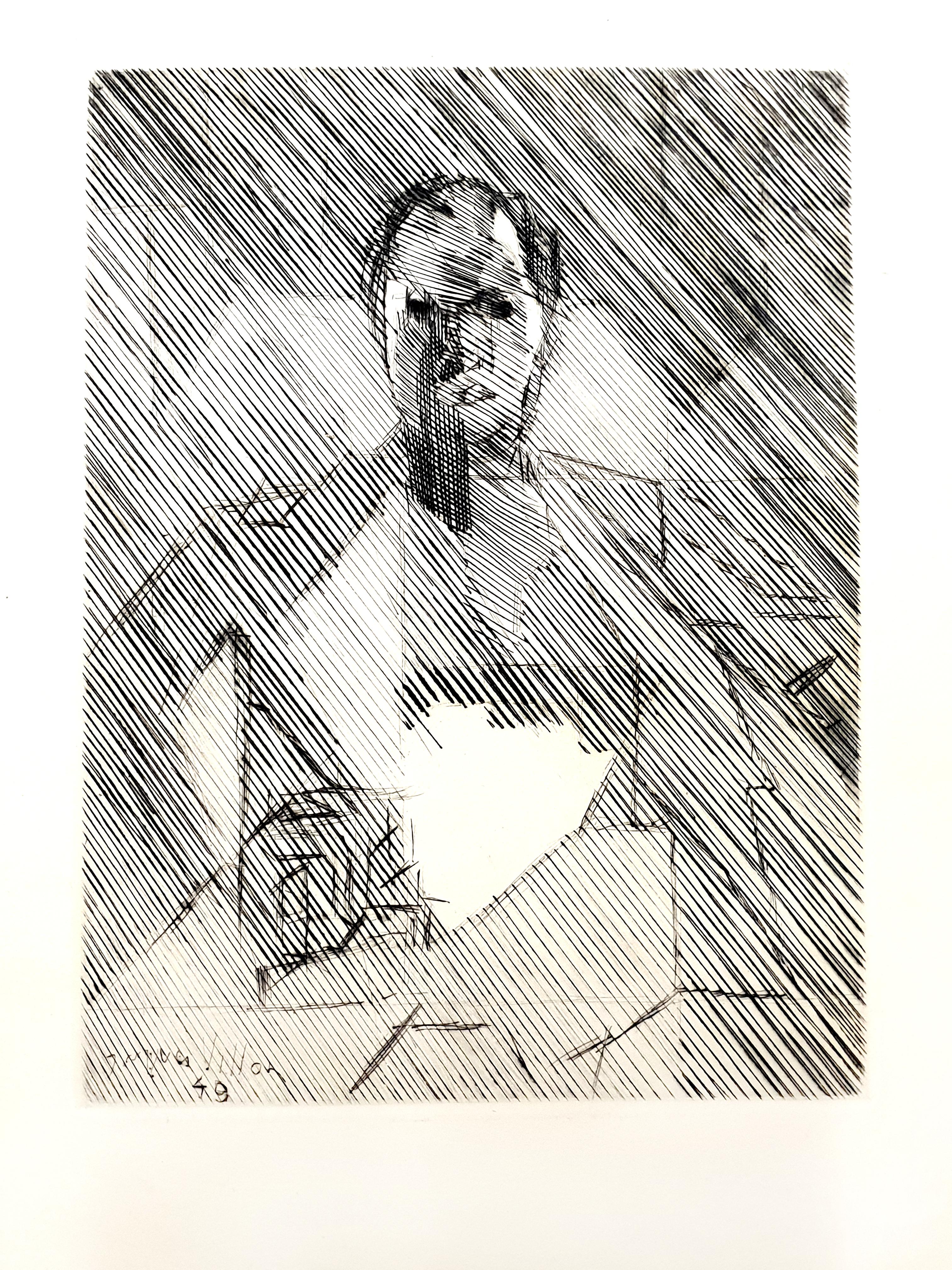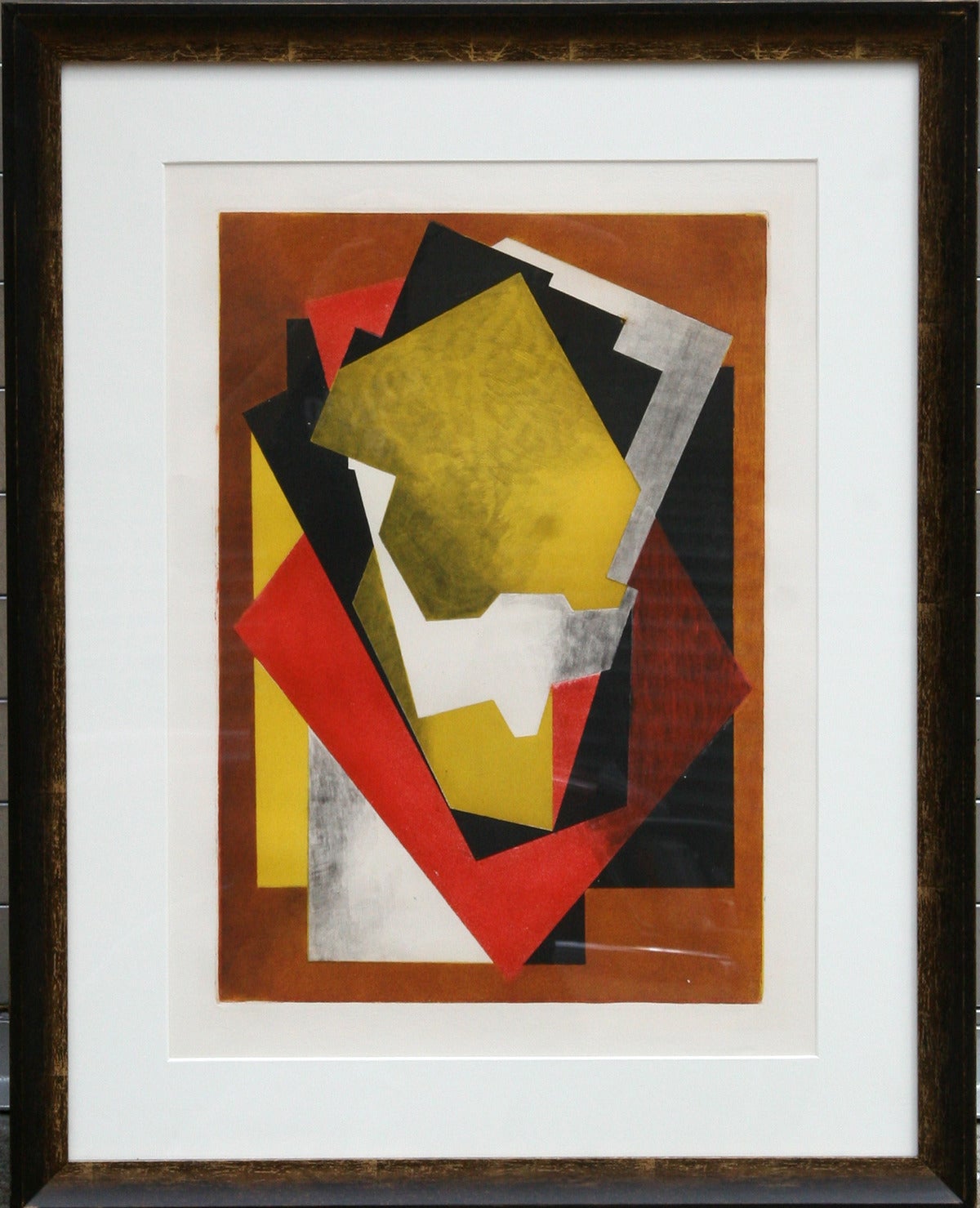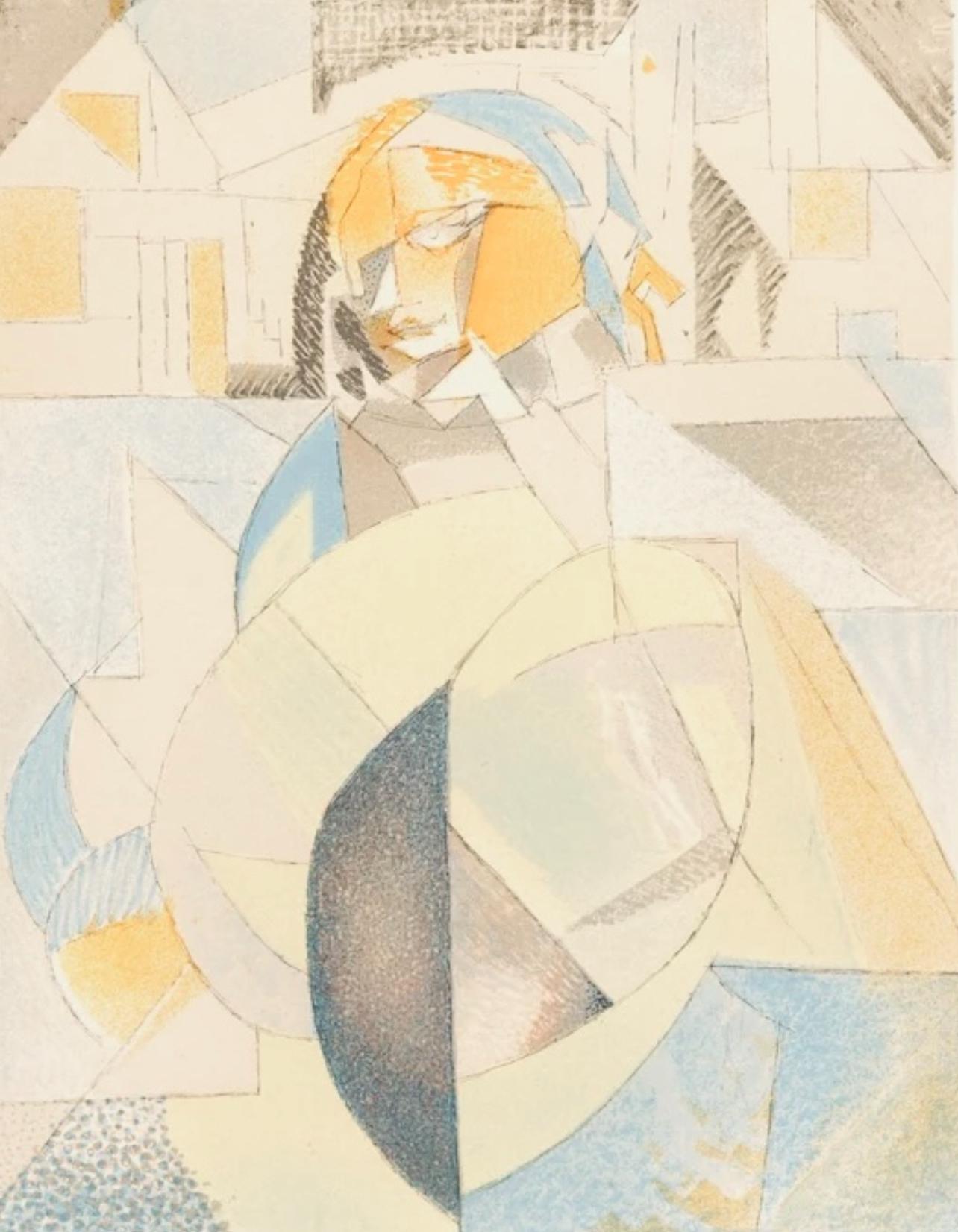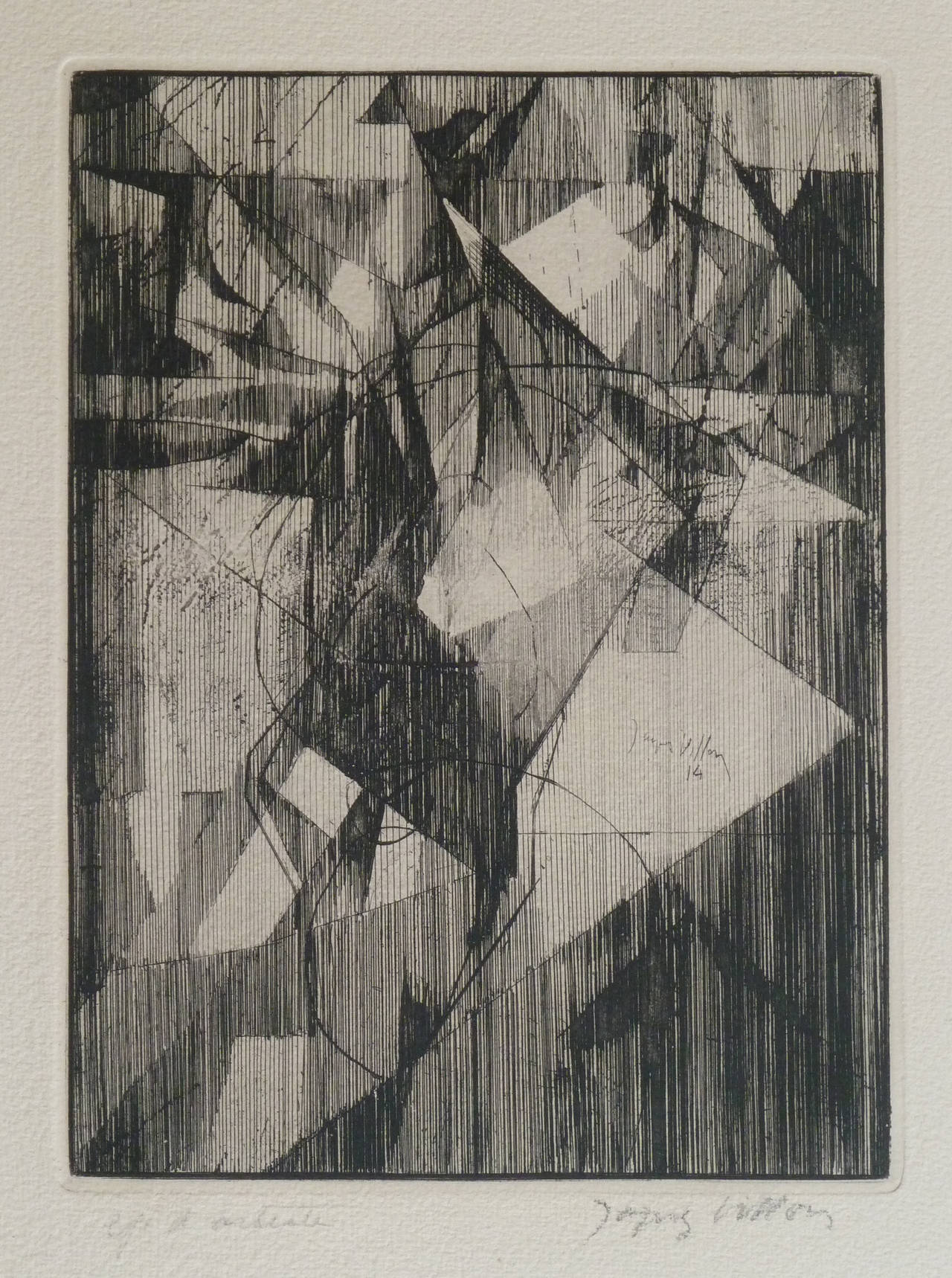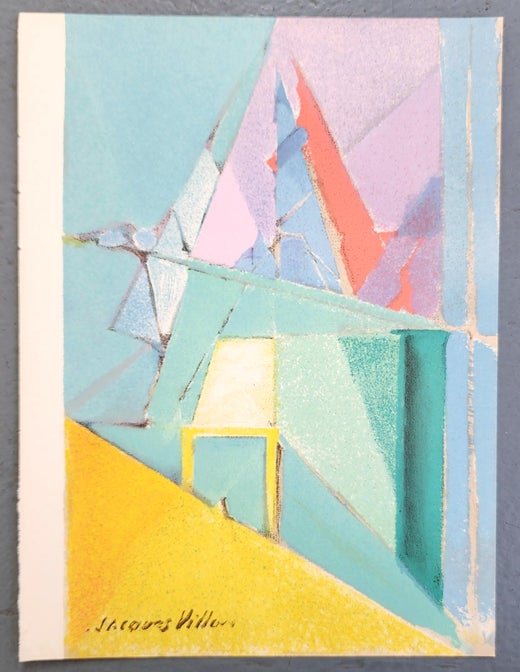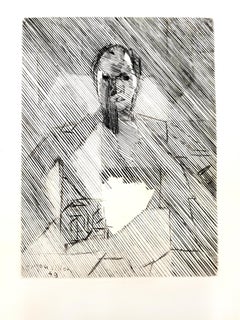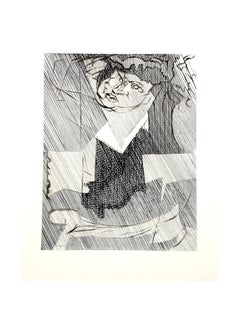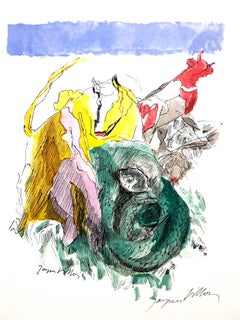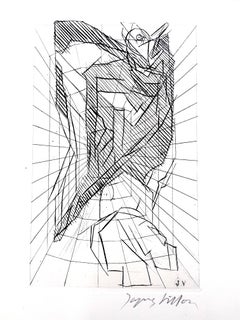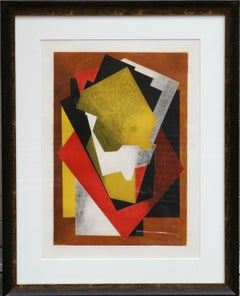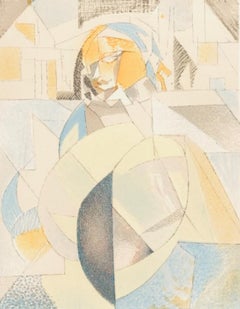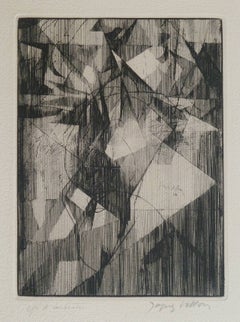Items Similar to Jacques Villon - Original Lithograph
Want more images or videos?
Request additional images or videos from the seller
1 of 6
Jacques VillonJacques Villon - Original Lithograph1964
1964
$1,434.26
£1,072.56
€1,200
CA$1,977.40
A$2,170.25
CHF 1,140.50
MX$25,825.51
NOK 14,578.94
SEK 13,322.27
DKK 9,144.50
About the Item
Jacques Villon - Original Lithograph
Lithograph, 1964
Dimensions: 32 x 24 cm
Revue Art de France
Pierre Soulages or the "painter of black" as he is often referred to, has rightfully become one of the key international figures of post-war abstraction. Since the 1940s, Soulages has been known as one of the leaders of what was then a new group of purely abstract painters known as the Ecole de Paris. For over seventy years now, Soulages has been systematically exploring the material properties of paint, pushing the boundaries of the power of expression contained within the medium. In his early work primarily dating from the early to late 1940s Soulages utilized a variety of media including walnut stain and tar which proved to be moderately successful for endeavors, however, it was not until the 1950s when he began painting with oil on canvas, and more specifically, black oil paint on canvas that he was really able to tackle his investigation with thorough execution. Soulages became transfixed with black paint, using it almost exclusively in the following decades of his career up until today. "I was always interested in black, even as a child," Soulages once stated, "I used black paint and when someone asked what I was painting I said 'snow'. I think with hindsight that I used black to make the paper look more white" (Claire Rosemberg. "Black is the new black for Pierre Soulages, France's best known living artist." The Telegraph [London] 14 October 2009). For Soulages, black is not only a color, but it is also and almost more importantly a non-color; meaning that unlike most other pigments, it contains all colors within it making it the most versatile hue that can change dramatically with light.
Along with his use of black paint, Soulages' almost poetic mark-making and the formal play he creates within his compositions, imbues his paintings with an ethereal and ultimately existential quality. The sweeping and almost forceful planar brushstrokes are evocative of an American counterpart, Franz Kline. Yet, unlike Kline, Soulages' initial application of paint and further manipulation of the surface work together to form his dramatic compositions. Often Soulages would make and use his own painting implements or tools, including homemade brushes and palette knives to his own invention, a flat rubber spatula type tool known as a lame. With this these tools, Soulages would apply broad and dense layers of paint that he would then adjust by scraping, digging and etching into, resulting in a surface which brilliantly articulates a space of tension created by the play between light and dark, space and absence and the passing of time.
- Creator:Jacques Villon (1875-1963, French)
- Creation Year:1964
- Dimensions:Height: 12.6 in (32 cm)Width: 9.45 in (24 cm)Depth: 0.04 in (1 mm)
- Medium:
- Movement & Style:
- Period:
- Condition:
- Gallery Location:Collonge Bellerive, Geneve, CH
- Reference Number:1stDibs: LU16122171143
Jacques Villon
Jacques Villon was born Gaston Duchamp in 1875. He was the oldest brother of the artists Marcel Duchamp, Suzanne Duchamp-Crotti and the sculptor Raymond Duchamp-Villon. Initially a law student, in 1894 he went to Paris to study art. It was there that he met Henri Toulouse-Lautrec and other influential artists in Paris, and changed his name to Jacques Villon, after the poet. Villon made prints of some of the most well-known belle-époque portraits and genre scenes of the early twentieth century. Around 1911, he came under the influence of Picasso and other cubists, and became a leading exponent of the style, exhibiting in the 1913 Armory Show in New York. In 1922, the Galerie Bernheim-Jeune commissioned Villon to produce a series of color aquatints after 38 major nineteenth- and twentieth-century paintings. This series included works by Pierre Auguste Renoir, Henri Matisse, Pablo Picasso, Paul Cezanne, Georges Braque, Raoul Dufy, Amadeo Modigliani, Edouard Manet, Pierre Bonnard, and others. Artists who were alive at the time of the printing collaborated with Villon, and signed the prints. The project took ten years to complete. Several of these prints are valued highly today, and some went on to be reproduced by the Louvre Museum as photo-etchings. Villon's 'cubist' etchings, with their characteristic cross-hatching, are amongst the most renowned prints of the twentieth century. Jacques Villon's long career brought him fame. The diverse nature of his paintings, from end-of-the-century portraits to cubist and abstract styles to graphic works, made him a major figure in twentieth-century art. He was made a Grand Officer of the Légion d'Honneur, and upon his death in 1963, and he was given a state funeral.
About the Seller
4.9
Gold Seller
Premium sellers maintaining a 4.3+ rating and 24-hour response times
Established in 2015
1stDibs seller since 2015
972 sales on 1stDibs
Typical response time: 1 hour
- ShippingRetrieving quote...Shipping from: Collonge Bellerive, Geneve, Switzerland
- Return Policy
More From This Seller
View AllJacques Villon - Cubist Man - Original Etching
By Jacques Villon
Located in Collonge Bellerive, Geneve, CH
Jacques Villon - Man- Original Etching
1949
Signed in the plate
Dimensions : 44.5 x 32.5 cm
Category
1940s Modern Portrait Prints
Materials
Etching
Jacques Villon - Cubist Man - Original Etching
By Jacques Villon
Located in Collonge Bellerive, Geneve, CH
Jacques Villon - Cubist Man - Original Etching
From the literary review "XXe Siècle"
1951
Dimensions: 32 x 24 cm
Publisher: G. di San Lazzaro.
Unsigned and unumbered as issued
Category
1950s Modern Abstract Prints
Materials
Etching
Jacques Villon - Colorful Spirit - Handsigned Original Lithograph
By Jacques Villon
Located in Collonge Bellerive, Geneve, CH
Jacques Villon - Colorful Spirit
Original Lithograph
Handsigned
Dimensions: 38 x 28 cm
Jacques Villon (1875 - 1963)
Jacques Villon was born Gaston Duchamp on July 31, 1875, in Da...
Category
1970s Modern Portrait Prints
Materials
Lithograph
Jacques Villon - Cubist Cavern - Original Etching
By Jacques Villon
Located in Collonge Bellerive, Geneve, CH
Jacques Villon - Cubist Cavern - Original Etching
1949
Signed in pencil
Dimensions : 12.5 x 16 cm
Category
1940s Modern Landscape Prints
Materials
Etching
Jacques Villon - Man - Original Etching
By Jacques Villon
Located in Collonge Bellerive, Geneve, CH
Jacques Villon - Man- Original Etching
1951
Signed in pencil and numbered
Dimensions : 34.8 x 25 cm
Category
1950s Modern Portrait Prints
Materials
Etching
Flowers- Lithograph
By Jacques Villon
Located in Collonge Bellerive, Geneve, CH
(after) Jacques Villon
Title: Flowers
Signed in the plate
Dimensions: 38 x 28 cm
from the edition of 250 as issued in Warnod, Andre, "Les Peintres mes amis" (Paris: Les Heures Claire...
Category
1960s Modern Portrait Prints
Materials
Lithograph
You May Also Like
Reading Man - Original lithograph (Mourlot)
By Jacques Villon
Located in Paris, IDF
Jacques VILLON
Reading Man, 1962
Original lithograph (Mourlot workshop)
Printed signature in the plate
On tinted vellum 32 x 24 cm (c. 13 x 10 in)
Excellent condition
Category
1960s Cubist Figurative Prints
Materials
Lithograph
Cubist Composition, Aquatint Etching by Jacques Villon
By Jacques Villon
Located in Long Island City, NY
Artist: Jacques Villon, After, French (1875 - 1963)
Title: Composition
Year: 1927 (printed circa 1965)
Medium: Aquatint Etching, Signed and dated '27' in the plate
Image: 19 x 13.5 i...
Category
Mid-20th Century Cubist Abstract Prints
Materials
Etching, Aquatint
Composition, Regards sur Paris, Jacques Villon
By Jacques Villon
Located in Southampton, NY
Lithograph on vélin d’Arches paper. Inscription: unsigned and unnumbered, as issued. Good condition. Notes: from the folio, Regards sur Paris, 1963. Published by André Sauret, Paris;...
Category
1960s Modern Landscape Prints
Materials
Lithograph
$1,036 Sale Price
20% Off
Free Shipping
Le Petit Équilibriste
By Jacques Villon
Located in London, GB
JACQUES VILLON 1875-1963
(Gaston Duchamp) Damville 1875-1963 Paris (French)
Title: Le Petit Équilibriste, 1914
Technique: Original Hand Signed and Numbered Etching with full m...
Category
1910s Cubist Abstract Prints
Cubist composition - Original Etching - 1965
By Jacques Villon
Located in Paris, IDF
Jacques Villon
Cubist composition
Original etching (printed in Atelier Manuel Robbe)
Printed signature in the plate
On Arches vellum 38 x 28 cm (c. 15 x 11 in)
INFORMATION :
Edite...
Category
1960s Cubist Figurative Prints
Materials
Etching
Composition (Ginestet/Pouillon 65-72), Jacques Villon, Huit lithographies
By Jacques Villon
Located in Southampton, NY
Lithograph on vélin d’Arches paper. Signed in pencil and unnumbered, as issued. Good condition. Notes: From the folio, Jacques Villon, Huit Lithographies Originales, 1962. Published ...
Category
1940s Modern Landscape Prints
Materials
Lithograph
$5,196 Sale Price
20% Off
Free Shipping
More Ways To Browse
Joan Miro 1958
Joan Miro Ceramiques
Joan Miro Constellations
Joan Miro Hand Signed Limited Edition Poster
Joan Miro Homenatge
Joan Miro Signed Numbered
Joan Miro World Cup Lithograph
Joan Mitchell Tree
Joe Chia
John S De Martelly
Juilliard Poster
Kandinsky Verve
Karel Appel Poster
Karl Korab
Katherine Dunham
Kaws Mbf
Kaws Tension
Keith Haring Dv8
